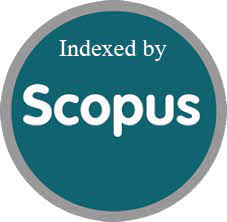Enhancing Seasonal Influenza Prediction Through Advanced Time Series Machine Learning Models
DOI:
https://doi.org/10.52783/jns.v14.2051Abstract
Seasonal influenza is a significant public health concern, causing widespread illness, hospitalizations, and deaths annually. Accurate forecasting of influenza activity is critical for effective resource allocation, vaccination campaigns, and public health preparedness. This paper proposes a novel approach to enhance seasonal influenza prediction using advanced time series machine learning models. We introduce a hybrid framework that combines traditional epidemiological data with machine learning techniques, including Long Short-Term Memory (LSTM) networks, Seasonal Autoregressive Integrated Moving Average (SARIMA), and Prophet. The proposed model is evaluated on historical influenza-like illness (ILI) data, demonstrating superior performance in predicting influenza trends compared to existing methods. This research contributes to the growing field of computational epidemiology by providing a robust and scalable solution for influenza forecasting.
Downloads
Metrics
References
CDC. (2023). Influenza-like Illness (ILI) Activity Level Indicator Determined by Data. [https://www.cdc.gov/flu/weekly/overview.htm](https://www.cdc.gov/flu/weekly/overview.htm)
Hochreiter, S., & Schmidhuber, J. (1997). Long short-term memory. Neural Computation, 9(8), 1735-1780.
Taylor, S. J., & Letham, B. (2018). Forecasting at scale. The American Statistician, 72(1), 37-45.
Box, G. E., Jenkins, G. M., & Reinsel, G. C. (2015). Time Series Analysis: Forecasting and Control. John Wiley & Sons.
Hyndman, R. J., & Athanasopoulos, G. (2021). Forecasting: Principles and Practice (3rd ed.). OTexts.
Zhang, G. P. (2003). Time series forecasting using a hybrid ARIMA and neural network model. Neurocomputing, 50, 159-175.
Makridakis, S., Spiliotis, E., & Assimakopoulos, V. (2018). Statistical and Machine Learning forecasting methods: Concerns and ways forward. PLoS ONE, 13(3), e0194889.
Smyl, S. (2020). A hybrid method of exponential smoothing and recurrent neural networks for time series forecasting. International Journal of Forecasting, 36(1), 75-85.
Lim, B., & Zohren, S. (2021). Time series forecasting with deep learning: A survey. Philosophical Transactions of the Royal Society A, 379(2194), 20200209.
Shaman, J., & Karspeck, A. (2012).Forecasting seasonal outbreaks of influenza. Proceedings of the National Academy of Sciences, 109(50), 20425-20430.
Yang, W., Karspeck, A., & Shaman, J. (2014).*Comparison of filtering methods for the modeling and retrospective forecasting of influenza epidemics. PLoS Computational Biology, 10(4), e1003583.
Brooks, L. C., Farrow, D. C., Hyun, S., Tibshirani, R. J., & Rosenfeld, R. (2015). Flexible modeling of epidemics with an empirical Bayes framework. PLoS Computational Biology, 11(8), e1004382.
Viboud, C., & Charu, V. (2014). Influenza forecasting: From optimization to machine learning. The Lancet Infectious Diseases, 14(12), 1139-1140.
Reich, N. G., Brooks, L. C., Fox, S. J., Kandula, S., McGowan, C. J., Moore, E., ... & Shaman, J. (2019). A collaborative multiyear, multi model assessment of seasonal influenza forecasting in the United States. Proceedings of the National Academy of Sciences, 116(8), 3146-3154.
Zhang, G., Eddy Patuwo, B., & Hu, M. Y. (1998). Forecasting with artificial neural networks: The state of the art. International Journal of Forecasting, 14(1), 35-62.
Khashei, M., & Bijari, M. (2011). A novel hybridization of artificial neural networks and ARIMA models for time series forecasting. Applied Soft Computing, 11(2), 2664-2675.
Bontempi, G., Ben Taieb, S., & Le Borgne, Y. A. (2013). Machine learning strategies for time series forecasting. In Business Intelligence: Second European Summer School, eBISS 2012 (pp. 62-77). Springer.
Benidis, K., Rangapuram, S. S., Flunkert, V., Wang, Y., Maddix, D. C., Turkmen, C., ... & Januschowski, T. (2020). Deep learning for time series forecasting: Tutorial and literature survey. ACM Computing Surveys (CSUR), 54(6), 1-36.
Lampos, V., De Bie, T., & Cristianini, N. (2010). Flu detector—Tracking epidemics on Twitter. In Joint European Conference on Machine Learning and Knowledge Discovery in Databases (pp. 599-602). Springer.
Ginsberg, J., Mohebbi, M. H., Patel, R. S., Brammer, L., Smolinski, M. S., & Brilliant, L. (2009). Detecting influenza epidemics using search engine query data. Nature, 457(7232), 1012-1014.
Santillana, M., Nguyen, A. T., Dredze, M., Paul, M. J., Nsoesie, E. O., & Brownstein, J. S. (2015). Combining search, social media, and traditional data sources to improve influenza surveillance. PLoS Computational Biology, 11(10), e1004513.
Armstrong, J. S. (2001). Principles of forecasting: A handbook for researchers and practitioners. Springer.
Hyndman, R. J., & Koehler, A. B. (2006). Another look at measures of forecast accuracy. International Journal of Forecasting, 22(4), 679-688.
Tashman, L. J. (2000). Out-of-sample tests of forecasting accuracy: An analysis and review. International Journal of Forecasting, 16(4), 437-450
Downloads
Published
How to Cite
Issue
Section
License

This work is licensed under a Creative Commons Attribution 4.0 International License.
You are free to:
- Share — copy and redistribute the material in any medium or format
- Adapt — remix, transform, and build upon the material for any purpose, even commercially.
Terms:
- Attribution — You must give appropriate credit, provide a link to the license, and indicate if changes were made. You may do so in any reasonable manner, but not in any way that suggests the licensor endorses you or your use.
- No additional restrictions — You may not apply legal terms or technological measures that legally restrict others from doing anything the license permits.










